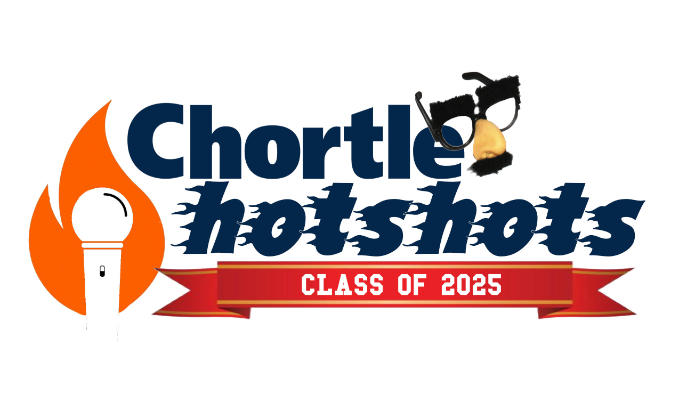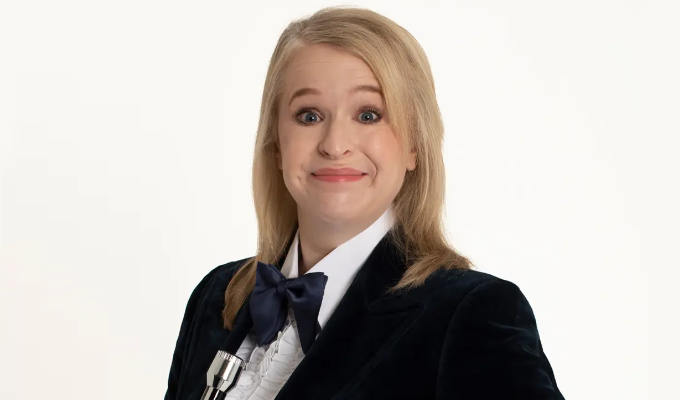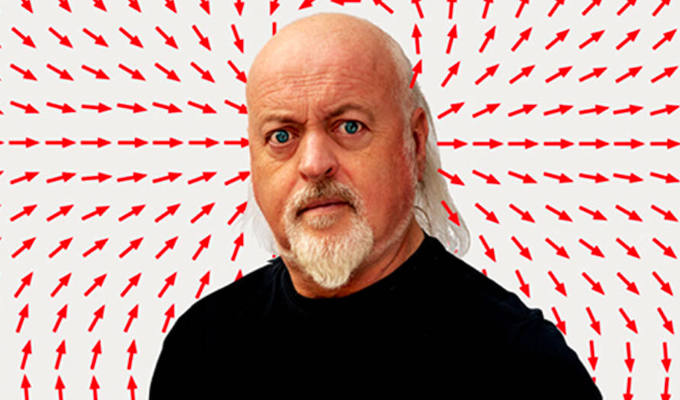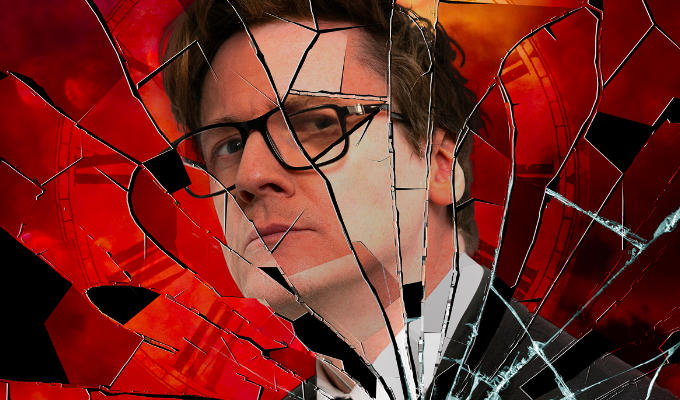Why Bottom should be top
Alex Newsome on an underappreciated sitcom
All too often when considering the truly great sitcoms, comedy fans overlook one that has never been granted the respect it deserved: Bottom, the Rik Mayall and Adrian Edmondson vehicle that always seems to be in the shadow of The Young Ones.
It is all-too common to see the series touted as a string of knob gags and people hitting each other with a variety of objects, putting it at the lower end of comedy programming. This not a new idea that has come with the benefit of hindsight; even at the time sketch show fans may recall that Bottom was the comedy programme of choice for Wayne Slob, providing him with a chance to laugh at words such as ‘willy’.
This is however a grossly unfair generalisation, just as if you were to lump Father Ted with Mrs Brown's Boys, purely by virtue of them both feature people that are Irish. Instead, I would say that Bottom marks the high point of the Mayall/ Edmondson partnership, with plenty of episodes that should rank alongside the greatest of shows British comedy has to offer.
So why does the show have its reputation? It would of course be misleading to suggest that there is not some degree of truth in the criticisms. Certainly both innuendos and violent exchanges are a large part of both the makeup of the show and the reason for its popularity. But these elements also opened it up to the criticisms that failed to take into account what the show was actually trying to achieve.
First, we should slay the myth that either double entendre or slapstick violence somehow makes a comedy lesser. This is a bizarre form of comedic snobbery that really stands up to little analysis, but has become a backbone of lazy comedy criticism when a writer has little else to say.
And why do acts such as Vic & Bob often receive a ‘get out of jail free’ card for performances that often featured a large degree of slapstick? Are their bouts of frying pan wielding tomfoolery of comic value purely because they take place within a surreal context that somehow elevates the act of comic violence? Of course not, and to suggest so would do a disservice to double acts stretching right back to Laurel & Hardy.
Equally, the double entente has a reputation for being a form of wit that graces the bottom of the humour barrel alongside Griff Rhys Jones's scripts for It'll Be Alright On The Night. The basis of them, however, is the oldest comedic technique of wordplay and an ability to quickly find something suggestive in a sentence. Of course, they done badly, but surely even a lot of Bottom's fiercest critics would have to concede that the innuendo was well done, even if they didn't find it amusing themselves.
So what was it about Bottom that was particularly appealing?
It's important to remember that Mayall and Edmondson had been working together on a variety of projects since they met at Manchester University in the late Seventiess. It has often been commented on that their characters and, more importantly, the relationship between them, has always had some degree of a constant to it, with everything from The Dangerous Brothers to Filthy Rich & Catflap featuring some variation on what was essentially a tried and tested dynamic.
Indeed, even in the latter when Mayall's character was made to be (moderately) successful, the dynamic still remained the same with Edmondson's character still being able to undermine him in a variety of ways. Accordingly, each project provided a refinement to their act, and each one can be deconstructed to reveal elements of previous shows that influenced them.
By the time the pair reached Bottom they had the success of The Young Ones to trade upon, but also the ideas that had been used in Catflap, with Mayall portraying a slightly less pitiful character in context, but one that could often be prone to bouts of stupidity that would see his character plumbing all new depths such as the mass slaughter of London's milkmen.
Bottom’s sitcom setup was perhaps a surprisingly radical move considering the successes that the duo had had beforehand. While the likes of The Young Ones had strong characters, they were also strong ensemble pieces that you would struggle to imagine with a member of the core cast missing. In contrast, Bottom stripped things right back and often relied entirely upon the chemistry between Richie and Eddie to carry an episode, with regulars like Spudgun and Little Dave Hedgehog being more of an occasional surprise than an expected constant.
This change in direction seems to have been something of a conscious decision, with 1991 also seeing Mayall and Edmondson tackling Samuel Beckett's absurdist play Waiting For Godot in the West End. In many respects, Vladimir and Estragon are the roles they were born to play and had spent many years playing variations of, all be it unintentionally.
Indeed, though little video footage of the production exists, we can easily draw immediate parallels between the performance and dynamic on stage with what would go on to be used in Bottom.The pair have been quite open over the years about their intention for Bottom to act as a 'cruder cousin' to the surrealist play and the importance of its roots should not be overlooked. For every moment that Beckett takes to dwell upon the futility of existence, he balances it with moments of slapstick-laden vaudeville humour, frequently with a lavatorial basis. This balance is one that Mayall and Edmondson would go on to use, all be it in a slightly adjusted form.
Indeed, this sense of futility is one of the most important elements to Bottom, but also one of the most overlooked. While Richie and Eddie may not be tramps, as Beckett implies his characters may be, their existence is no less lowly. Godot has been interpreted on numerous occasions as a metaphor for limbo, with the wait for the title character representing a deity that will pass judgement on them and provide them with purpose again. Whether or not this view is correct, (and Beckett certainly rejected it on many occasions,) it's concept relies on its surrealist landscape to work. By bringing this concept in to a setting that is closer to the real world, Bottom can be regarded as lowering the stakes to some degree, but the futility remains at the core.
Fundamentally,the characters in both works are absent of purpose and are flitting away the days until the release of death. In Eddie's case, the coping mechanism is one of drinking and time-wasting while Richie chases a dream of sexual success at least once with any woman available.
Richie's belief that this will make his life improve is not dissimilar from the hopes that Vladimir invests in Godot; both are futile. In fact, by making the characters’ goals rooted in the most base of purists, the programme gains a timeless quality.
Aside from references to the television programs Richie and Eddie use to while away their days, there is very little in the scripts for Bottom that confines it to a specific year. The highpoint of the series, the ferris wheel confined two hander Hole, could be performed in a theatre today and be just as relevant, its ending perhaps even more so.
This ability to produce a sitcom that could be simultaneously absurdist and satirical, yet unconfined to the time it was written in, shows Mayall and Edmondson's writing having developed to a new height.
Some criticisms – not least among American viewers – are that by having Richie and Eddie at the bottom of the social ladder, Bottom is a mean-spirited show, mocking the poor and underprivileged.
In British sitcoms, one of the most commonly used devices is a figure of authority whose plans fall apart, thus having his pomposity pricked. But comedy has often presented characters with no social standing who have their own kind of pretensions, from Harold Steptoe's beliefs that he would be cultured and respected if were it not for his father, to Rigsby's false belief in his own social status.
These characters may be pitiful already, but through their regular flights of delusional-fancy we can find comedy; not because it keeps them in their place, but because it stops them belittling those who suffer alongside them through their own pretensions.
Of course, this is not the only parallel to be drawn with comedy that went before Bottom. For every aspect that can be viewed as a refinement of the duo's dynamic there are also comparisons to be drawn with double acts of the past. While some may be more at home with a Blackadder structure of a clearly defined lead and stooge, Bottom's take on the double act is an equally old dynamic, stretching back to the likes of Laurel and Hardy, of the knowing and the unknowing fool.
Richie believes he is better than his drunk flatmate, but Eddie often outsmarts him and proves that he is in fact the smarter of the duo, but as they are still at the bottom of the social ladder it doesn't count for much at all. It's a basic comedy set-up that has a variation put on the old idea with the darker elements that Mayall and Edmondson dealt in, along with their heavy use of innuendo and the making of their characters even more pitiful than the likes usually seen in sitcoms.
This said, do not for one moment consider this staple to be to the programme’s detriment, as sitcom writing often comes back to a core set ideas. Comedy fans can be all too often quick to criticise a show for presenting us with ideas that remind of of something else. In the case of Bottom, it is one of the many cases of bizarre comic snobbery that has kept it from being given the credit that it deserves.
In addition to the writing, the performances Mayall and Edmondson deliver unquestionably show them as being at the top of their abilities. Both the slapstick and the comic timing throughout the three series show required a technicality that could only be produced by a seasoned professionals with a wealth of experience that allowed them to know not only how to get the best reaction from an audience, but even more importantly from their comedy partner. Watching their comedic symbiosis is a joy, as they make each half hour appear effortless no matter what style of comedy they are dealing in.
The timeless quality that squalor and desperation provide, along with the pitch-perfect execution of a double act at the heights of its power mean that Bottom deserves to be be treasured by comedy fans – and critics – for years to come.
Published: 14 Jan 2013






